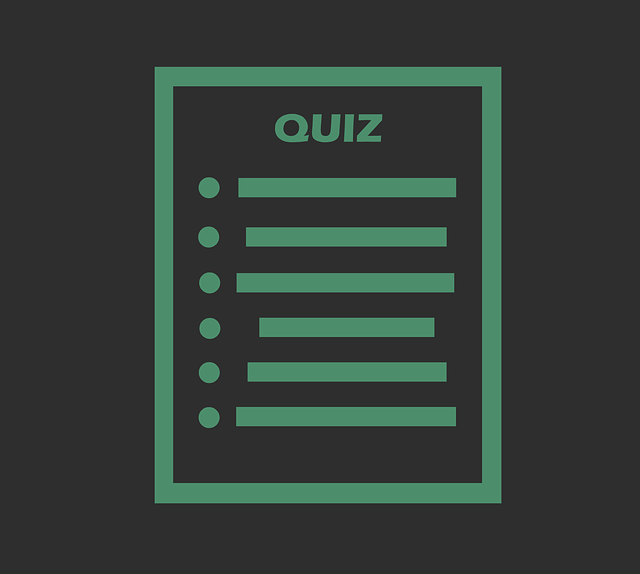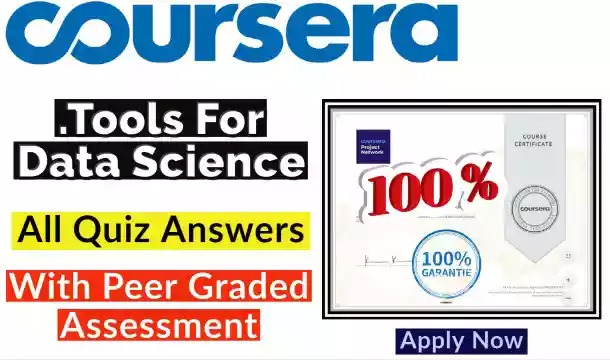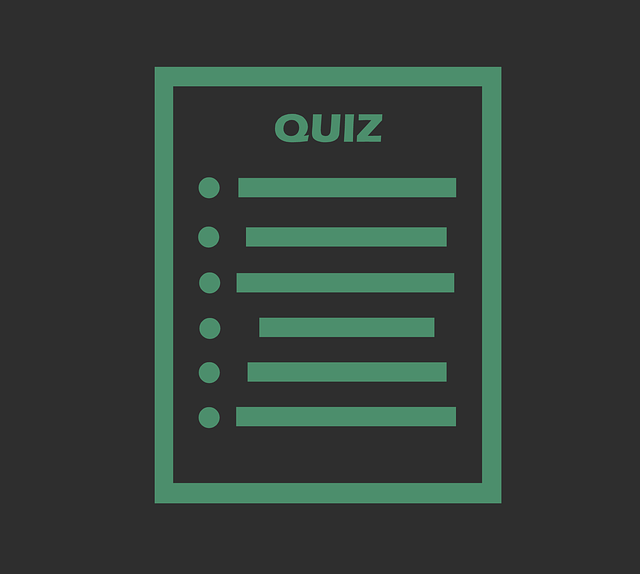In this blog you will find the correct answer of the Coursera quiz Writing and Editing Word Choice and Word Order Coursera mixsaver always try to brings best blogs and best coupon codes
Week- 1
Weekly Review (Graded)
1.
Question 1
In Seeing What Others Don’t, the psychologist Gary Klein offers an equation to think about how to improve performance. Identify it below.
1 point
- Improved Performance = Reducing Errors + Increasing Insights
- Improved Performance = MC^2
- Improved Performance = Talent x Effort
- Improved Performance = a^2 + b^2
2.
Question 2
What was the advice that the Dominican-American writer Julia Alvarez received from her grandmother about the power of writing?
1 point
- “El papel aguanta todo.”
- “El papel no aguanta nada.”
3.
Question 3
In the videos, we stressed that writing is about two things: mechanics and ________.
1 point
- sounding smart
- commas
- penmanship
- strategy
4.
Question 4
Both in the readings and in the classroom clips, an observation by Daniel Kahneman, who won the Nobel Prize in Economics, was used to capture the idea of “framing” and the importance of knowing the “words under the words.” Identify that observation below.
1 point
- “I believe he was a saint of some kind. When someone remarked in his hearing that he had lost an eye in the Civil War, he said, ‘I prefer to remember that I have kept one.’”
- “I never know how little I know about something until I try to write cogently about it.”
- “Don’t romanticize your ‘vocation.’ You can either write good sentences or you can’t. There is no ‘writer’s lifestyle.’ All that matters is what you leave on the page.”
- “People don’t choose between things, they choose between descriptions of things.”
5.
Question 5
The psychologist Anders Ericsson, who is often referred to as the “expert on experts,” has identified a method for achieving peak performance. He called it ________.
1 point
- Deliberate practice
- Temptation bundling
- The words under the words
- 6-60-6
6.
Question 6
Which of these is not an element of a “S.M.A.R.T.” goal?
1 point
- Specific
- Relevant
- Timely
- None of the above
7.
Question 7
The lesson we took from the book The End of Average by Todd Rose was to “Customize your __________.”
1 point
- car
- schedule
- education
- wardrobe
8.
Question 8
One of the videos stressed that “You can’t fix mistakes you don’t see.” The lesson was on the connection between
1 point
- S.M.A.R.T. Goals and Stretch Goals.
- Breadth and Depth.
- Drafting and Editing.
- Punctuation and Professionalism.
9.
Question 9
One of the videos included the following sentence from the short story “Birthmates” by the American writer Gish Jen: “Sometimes people get undivorced.” We said it was an example of _________.
1 point
- a nifty not
- a coordinating conjunction
- nuance
- headlining
10.
Question 10
In the “Punctuation and Professionalism” segment, we learned that sometimes skilled writers intentionally deviate from the convention against using comma splices. Three of the quotations below are examples of that. The other isn’t a comma splice at all. Identify the one that is not a comma splice at all.
1 point
- “She was fire, he was ice.”
- “It’s hard to fix mistakes you don’t see.”
- “Both stories are selective, neither is false.”
- “It was the best of times, it was the worst of times.”
Week- 2
Weekly Review (Graded)
1.
Question 1
To start the week, we spent time reviewing the material from the previous week, sort of like how television shows recap old episodes to better prepare viewers for the new episode. We called this segment __________.
1 point
Notes on Nuance
Previously On
Punctuation and Professionalism
Takeaways
2.
Question 2
One of the psychologists who coined the term “impostor syndrome,” Pauline Rose Clance, has said that she regrets the “syndrome” part of that phrase. “If I could do it all over again,” she told an interviewer in 2015, “I would call it the impostor ______, because it’s not a syndrome or a complex or a mental illness. It’s something almost everyone [goes through at some point].”
1 point
experience
ailment
illness
disease
3.
Question 3
Fill in the blank from the book Champions: The Making of Olympic Swimmers by Dan Chambliss. He is describing the “mundanity of excellence.” “The champion athlete does not simply do more of the same drills and sets as other swimmers; he or she also does things _______. That’s what counts. Very small differences, consistently practiced, will produce results.”
1 point
prettier
faster
better
worse
4.
Question 4
The video that reviewed “mechanics and strategy” included an observation by the American writer Russel Baker about punctuation. “In writing, punctuation plays the role of ________. It helps readers hear you the way you want to be heard.”
1 point
the words under the words
body language
the infinite power of grammar
an interrupting element
5.
Question 5
The term for word order is ______.
1 point
syntax
timely
diction
relevant
6.
Question 6
Which of these correctly states what we called the “Animal Farm Principle”?
1 point
“It was the best of times, it was the worst of times.”
“Show up, show up, show up, and after awhile the muse shows up, too.”
“All I know about grammar is its infinite power.”
“All hours are equal, but some hours are more equal than others.”
7.
Question 7
According to Ulrich Boser, the author of Learn Better, rereading and highlighting are particularly effective forms of studying.
1 point
True
False
8.
Question 8
What do you call a clause that can stand alone as a complete sentence?
1 point
A relative clause
An independent clause
A dependent clause
A reserve clause
9.
Question 9
The readings mentioned an advertising slogan used by The Economist magazine. It was a good example of a clever use of syntax. What was it?
1 point
“Nobody has a monopoly on effective language.”
“Life, liberty, and the pursuit of happiness.”
“Great minds like a think.”
“The order in which our sentences unfold or hit the reader is entirely within our control. Even better, syntactical choices can help us increase the precision of our writing, bringing what we say into sharper focus, even if we don’t have a mental thesaurus.”
10.
Question 10
True or False: The following sentence conforms with standard conventions of punctuation.
“I would really like to attend the writing workshop, however, I cannot make it this Friday.”
1 point
True
False
Week- 3
Weekly Review (Graded)
1.
Question 1
One of the videos mentioned the book Art Thinking: How to Carve Out Creative Space in a World of Schedules, Budgets, and Bosses by Amy Whitaker, who teaches at NYU and holds an interesting combination of degrees: she has an MFA from University College London and an MBA from Yale. Whitaker recommends trying to protect a certain part of your weekly schedule to “indulge your curiosity” and focus on things you can “learn and do.” Whitaker has a name for this idea. She calls it _______.
1 point
interleaving
studio time
a comma splice
the infinite power of grammar
2.
Question 2
What is it called when writers intentionally add extra conjunctions to a phrase or sentence?
1 point
Coordinating Conjunction
Polysyndeton
Alliteration
Asyndeton
3.
Question 3
Which of these is not an example of the Rule of Three?
1 point
“Give me liberty or give me death!”
“life, liberty, and the pursuit of happiness”
“liberty, equality, fraternity”
None of the above
4.
Question 4
The readings this week mentioned that the linguist John DeFrancis described writing as _______.
1 point
“the mundanity of excellence”
“the power of the particular”
“visible speech”
“invisible speech”
5.
Question 5
“If information is studied so that it can be interpreted in relation to other things in [your] memory, learning is much more powerful.”
The observation above, from the psychologist Robert Bjork, describes a process called ________.
1 point
interleaving
polysyndeton
adverbial conjunctions
notes on nuance
6.
Question 6
In Women and Power, the British historian Mary Ann Beard uses the “to” move we learned in the Notes on Nuance segment to comment on the Me Too movement. She also combines it with alliteration.
“From the casting couch to the gropes behind the office photocopier, from New York to _______, the spirit of Me Too may ensure that women are no longer silent about this kind of abuse.”
1 point
Dubai
New Jersey
Hong Kong
Nairobi
7.
Question 7
True or False: An adverbial conjunction is the same thing as a conjunctive adverb.
1 point
True
False
8.
Question 8
True or False: An adverbial conjunction is the same thing as a coordinating conjunction.
1 point
True
False
9.
Question 9
True or False: The “to” move has to be used in a Rule of Three way.
1 point
True
False
10.
Question 10
The assigned reading this week — Chapter 3 of Good with Words — indicated that ________ are often spots where you will see a lot of Rule of Three.
1 point
subtitles of books
the copyright page of books
the acknowledgement section of books
the footnotes of books
Week- 4
Weekly Review (Graded)
1.
Question 1
Which of these is not one of the concepts we mentioned when discussing the work of the psychologist Robert Bjork, who runs the Learning and Forgetting Lab at UCLA?
1 point
Spacing
Desirable difficulty
Interleaving
T-Shaped
2.
Question 2
One of the videos mentions an article in the Chronicle of Higher Education about the habits of highly productive writers. Which of the statements below did the video say was in that article?
1 point
“[Highly productive writers] leave off at a point where it will be easy to start again.”
“[Highly productive writers] don’t let themselves off the hook.”
“[Highly productive writers] work on more than one thing at once.”
All of the above
3.
Question 3
What term did the materials employ to suggest that good writers evoke more than just the sense of sight?
1 point
Strive for Five
The Rule of Three
The Words Under the Words
None of the above
4.
Question 4
One of the videos included an excerpt from The First Five Pages by the American literary agent and writer Noah Lukeman. “Minor distinctions can make a ______ difference. Specificity is what distinguishes poor from good from brilliant writing. As a writer, you must train your mind to be, above all, exacting.” Fill in the missing word.
1 point
major
insignificant
slight
None of the above
5.
Question 5
The readings included a helpful statement about the effort that can be necessary to write in an authentic way: “sometimes sincerity takes a few ______.”
Fill in the missing word.
1 point
personalized defaults
desirable difficulties
drafts
comma splices
6.
Question 6
The American poet Ruth Stone has said that “I decided very early on not to write like other people.” Which concept does Stone’s commitment resemble?
1 point
Punctuation and Professionalism
Sentences that nobody else could write
Interleaving
The Rule of Three
7.
Question 7
True or False: An adverbial conjunction is the same thing as a conjunctive adverb.
1 point
True
False
8.
Question 8
Which of these is not an example of chiasmus?
1 point
“Ideals without technique are a mess. But technique without ideals is a menace.”
—Karl Llewellyn, “On What’s Wrong with So-Called Legal Education?”(1935)
“I believe that the extraordinary should certainly be pursued. But extraordinary claims require extraordinary evidence.”
—Carl Sagan, “Night Walkers and Mystery Mongers: Sense and Nonsense at the Edge of Science” (1986)
“The school was my home, and my home was the school.”
—Malala Yousafzai and Christina Lamb, I am Malala: The Girl Who Stood Up for Education and Was Shot by the Taliban (2013)
“For the strength of the pack is the wolf, and the strength of the wolf is the pack.”
—Rudyard Kipling, The Jungle Book (1894)
9.
Question 9
True or False: The word “however” is a coordinating conjunction.
1 point
True
False
10.
Question 10
The video on cover letters and other application materials suggested a particular framework for thinking about the different elements of a cover letter and other application materials. What was it?
1 point
F-A-N-B-O-Y-S
S-H-A-P-E
Keep/Cut
E-D-I-T
Important Links:
- Advanced Algorithms and Complexity Coursera Week 1 Quiz
- Business Analytics for Decision Making Coursera Week 1 Quiz
- Epidemiology: Successful Career Development Coursera Week 1
- How Things Work: An Introduction to Physics week 1
- Introduction to Public Speaking Coursera week 1 Quiz





